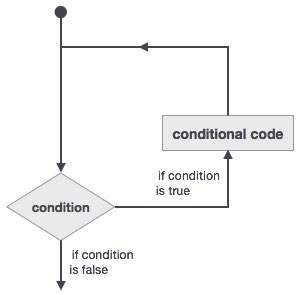There may be a situation, when you need to execute a block of code several number of times. In general, statements are executed sequentially : The first statement in a function is executed first, followed by the second, and so on.
Programming languages provide various control structures that allow for more complicated execution paths.
A loop statement allows us to execute a statement or group of statements multiple times and following is the general form of a loop statement in most of the programming languages −

Fortran provides the following types of loop constructs to handle looping requirements. Click the following links to check their detail.
| Sr.No | Loop Type & Description |
|---|---|
| 1 |
do
loop
This construct enables a statement, or a series of statements, to be carried out iteratively, while a given condition is true. |
| 2 |
do while loop
Repeats a statement or group of statements while a given condition is true. It tests the condition before executing the loop body. |
| 3 |
nested loops
You can use one or more loop construct inside any other loop construct. |
Loop control statements change execution from its normal sequence. When execution leaves a scope, all automatic objects that were created in that scope are destroyed.
Fortran supports the following control statements. Click the following links to check their detail.
| Sr.No | Control Statement & Description |
|---|---|
| 1 |
exit
If the exit statement is executed, the loop is exited, and the execution of the program continues at the first executable statement after the end do statement. |
| 2 |
cycle
If a cycle statement is executed, the program continues at the start of the next iteration. |
| 3 |
stop
If you wish execution of your program to stop, you can insert a stop statement |